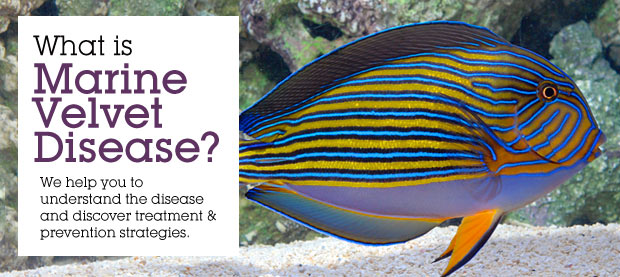Velvet Disease in Fish: 5 Facts You Must Know
 Fact 1: Velvet Disease in fish has been identified using other aliases. This disease is also called Rust, Gold Dust Disease, Oödinium. It is common in aquarium fish and some saltwater fish. Sea bass and Betta are some species known to be affected by Velvet Disease frequently. Velvet Disease appears as tiny white spots on fish. These spots are fine and give the host fish a slimy appearance.
Fact 1: Velvet Disease in fish has been identified using other aliases. This disease is also called Rust, Gold Dust Disease, Oödinium. It is common in aquarium fish and some saltwater fish. Sea bass and Betta are some species known to be affected by Velvet Disease frequently. Velvet Disease appears as tiny white spots on fish. These spots are fine and give the host fish a slimy appearance.
Fact 2: Velvet Disease in fish is highly contagious. Oödinium is a small parasite like organism that causes Velvet Disease. Classifications are mixed as it related to this parasite. Some people refer to Oödinium as protozoan while others suggest it as algae. This parasite can live in the water without feeding on a fish for up to 24 hours. After this amount of time, the Velvet finds a new host fish. Stressed fish are susceptible to Velvet disease. This disease is known to occur in crowded environments or an atmosphere where there are poor water conditions like ponds. Aquariums that do not have quality water may allow Velvet disease to flourish.
Fact 3: Velvet Disease is deadly among affected fish. The parasite attacks skin cells and gills on a fish and feeds on nutrients from them. Velvet destroys a lot of the tissue on a fish during its feeding cycle. Velvet Disease in fish may not be easy to detect until it has advanced in stages and become fatal. Fish that have severe skin infections may not respond to treatment. Putting a bright light up to the fish to examine its skin or dropping it in fresh water may help to detect Velvet. Using the fresh water method, the organisms will fall to the bottom of the water.
Fact 4: There are various symptoms of Velvet Disease in fish. One common symptom is a tired looking fish that does not have much of an appetite. The infected fish may also suffer from weight loss and have trouble breathing. Fish may also scratch itself on hard surfaces around the aquarium. Other symptoms included clamped fins and a fine yellow, dusty or gold film on the fish’s skin. Velvet Disease may also cause the skin to peel off of the infected fish.
Fact 5: A product called Acriflavine is known to treat Velvet disease in fish. Acriflavine is a dye that stains the skin. You could also treat Velvet disease with copper. Using too much of Acriflavine or Copper could cause problems for your fish such as poisoning or infertility. Removing light sources in and around the aquarium and rising water temperature has also been said to help treat infected fish.


Comments are closed.